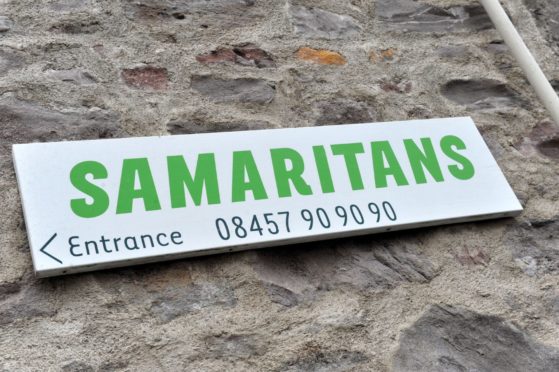Scotland recorded 805 deaths linked to suicide in 2020, a fall of 28 from the previous year and the first time the country’s rate has dropped for four years.
However, there was also a 17% jump in the number of alcohol-specific deaths across Scotland last year, after a significant decrease in 2019.
New statistics released by the National Records of Scotland (NRS) show the suicide rate fell from 15.3 in 2019 to 14.7 in 2020 – though last year’s figure was still the second-highest recorded since 2013.
Across the country, men accounted for 71% of deaths linked to suicide.
The Highlands had one of the highest rates in the country with 21.8 deaths per 100,000 population, behind only Dundee City.
Aberdeen suicide rate increases
Aberdeen City recorded an increase in its suicide rate between 2019 and 2020, the only local authority in the north-east to do so.
While its rate grew from 10.9 to 13.1, the rate for Aberdeenshire decreased from 14.1 to 11.9 and Moray’s fell from 17.7 to 15.7.
Moray still has the highest rate per 100,000 population in the north-east.
Orkney, the Western Isles and Shetland also recorded an increase in their suicide rate, with Shetland’s doubling from 8.7 to 17.5.
Suicide in Scotland: What does the data show?
Most deprived areas hit hardest
In their report, the NRS highlighted that the country’s most deprived areas had a suicide rate three times that of the least deprived areas.
That disparity was also reflected in the statistics for alcohol-specific deaths, with death rates in the most deprived areas 4.1 times higher than the least deprived.
Last year, there were 1,190 alcohol-specific deaths recorded across Scotland, an increase of 17% on the year before.
The country’s age-standardised death rate was 20.5 per 100,000 population, though four NHS health boards recorded a rate higher than that – including the Highlands and the Western Isles.
NHS Grampian had the fourth-lowest alcohol-specific death rate in the country, according to the statistics.
‘Devastating to see’
In terms of local authority areas, Aberdeenshire had the second-lowest death rate in the country, with only Shetland lower.
However, in 2020 Aberdeenshire also recorded its second-highest annual number of alcohol-specific deaths since records began more than 40 years ago, with 32.
In Shetland, there were no alcohol-specific deaths recorded at all last year.
Reacting to the NRS figures, chief executive of Alcohol Focus Scotland Alison Douglas said, “Last year we saw a positive reduction in the number of deaths caused by alcohol.
“This sudden increase of 17% is devastating to see and a tragedy for everyone affected. It is a stark reminder that we cannot afford to take our eye off the ball where alcohol harm is concerned.
“Scotland has made good progress in addressing the problems we have with alcohol by introducing policies like minimum unit pricing which is showing promising results. Yet the impact of the pandemic threatens to undermine this progress.
“If we are to prevent more people losing their lives to alcohol and to reduce health inequalities we need to redouble our efforts by reducing the availability of alcohol, restricting its marketing and by uprating minimum unit price.
“Importantly, we also need to make sure that support is available to those who need it now.”
Alzheimer’s and accidental deaths
Meanwhile, there was a decrease of 1.1% in the number of deaths where Alzheimer’s and other dementias were the underlying cause.
There were 2,759 accidental deaths in Scotland, a 1.2% increase compared with 2019.
The majority of these accidental deaths were said to be the result of accidental poisonings or falls.
Whatever you’re going through, you can call Samaritans free any time on 116 123 or email: jo@samaritans.org or visit www.samaritans.org to find details of your nearest branch.
